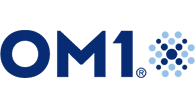
OM1 is re-imagining real-world data and evidence by developing large, electronically-connected networks of health data in immunology, cardiometabolic, mental health, neuroscience, respiratory, and ENT specialty areas.
Leveraging its extensive clinical networks, unparalleled technology, and industry-leading artificial intelligence platform, OM1 offers enriched healthcare datasets, advanced platforms for regulatory-compliant real-world studies, and personalized medicine solutions. With a focus on deep clinical insights, the offerings are used to
unlock the power of healthcare data to measure and predict outcomes, accelerate medical research, and improve clinical decision making.
